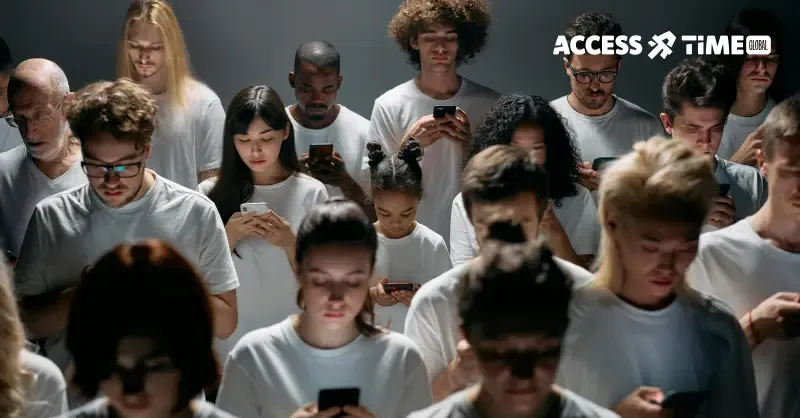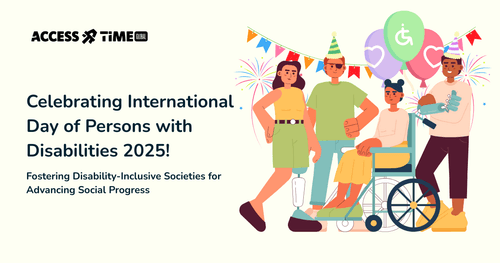Accessibility Neglect Hurts Your Brand (And It Shows)
Prasaja Mukti - Accessibility UX Writer
●●
You’ve worked so hard to build your brand’s reputation through thoughtful marketing, great products, and genuine customer relationships.
But sometimes, it’s easy to forget that accessibility is just as important
.
We don’t want to alarm you, but a single tweet (or post?) can change everything. A customer with a disability can share their frustration about not being able to use your website or app. That post can gains traction, gets thousands of reposts, and suddenly your brand is at the center of a conversation about inclusivity.
If you’re still on good terms with Google, you can search for quick fixes. You might also find out how often accessibility issues affect people who genuinely need them.
Brands often face these challenges, but here’s the good news.
Brands that prioritize accessibility can steer clear of these situations and actually boost their reputation and build stronger customer loyalty.
Brand Stories With Unexpected Turn
Domino's Pizza found themselves in the spotlight when
a blind customer couldn't order through their website or mobile app
. What started as a customer experience issue became a years-long legal battle that reached the Supreme Court.
The narrative shifted from "convenient pizza ordering" to questions about corporate values and customer inclusion.
Target Corporation faced a similar challenge in the early 2000s when
their website wasn't accessible to screen reader users
. But Target's response tells a different story. Rather than fighting the issue, they embraced it as an opportunity to improve, becoming leaders in accessible retail design both online and in physical stores. Today, Target is praised for their inclusive design choices and accessibility innovations.
The contrast is striking. Both companies faced similar challenges, but their responses created entirely different brand narratives. One known for resistance, the other for leadership.
The Power of Accessibility Leadership
Companies that proactively embrace accessibility create competitive advantages and build stronger brand loyalty. Microsoft transformed their brand reputation through
accessibility leadership under CEO Satya Nadella
, whose personal experience with his son's cerebral palsy influenced his perspective. They created the Xbox Adaptive Controller for gamers with limited mobility, developed AI tools for people with visual impairments, and redesigned software with inclusivity in mind.
The result? Microsoft isn't just seen as a technology company and they're actually viewed as a company that uses technology to empower everyone. This positioning has attracted talent, customers, and partnerships while generating positive press coverage and social media engagement.
Now for Apple, they built accessibility features into their products long before it was legally required. VoiceOver has been built into iPhones since 2009, alongside features for users with hearing, vision, mobility, and cognitive differences. They don't market these as "special features for disabled users" and they present them as innovations that make products better for everyone, creating fierce brand loyalty among users with disabilities and their families.
Of course we at AccessTime also use the products mentioned above, because the value we hold is mutual trust in brands that are fundamentally accessible
.
The Subtle Ways Accessibility Shapes Brand Perception

<Note>
Accessibility works on multiple levels. When people encounter websites with smooth keyboard navigation, clear color contrasts, and helpful error messages, they might not consciously think “hmm, this site is accessible," but they do think "this site feels professional and well-designed."
</Note>
They trust it more,
complete purchases, and
recommend it to others.
Conversely, sites with poor color contrast, confusing navigation, or unclear forms create subtle doubts about the brand's attention to detail and customer care. These impressions happen below conscious thought but influence purchasing decisions and brand loyalty over time.
Airbnb exemplifies this principle
. Their commitment to accessibility includes features helping people with disabilities find suitable accommodations and communicate needs clearly. But these same features (like detailed property descriptions and clear communication tools) can benefit all users by reducing uncertainty and improving the booking experience, making Airbnb's platform feel more trustworthy than competitors.
The Ripple Effect of Inclusive Brands
The disability community is well-connected and influential. When brands create genuinely positive experiences for users with disabilities, word spreads quickly through networks that highly value authentic inclusion.
Starbucks discovered this when
incorporating accessibility features into their mobile app and store designs
. They added features for customers who are deaf or hard of hearing, improved navigation for customers with visual impairments, and trained staff on disability etiquette. These efforts generated positive coverage in disability publications, earned recognition from advocacy organizations, and created authentic social media buzz.
The ripple effect works in reverse too!
Brands that make it tough for people with disabilities to use their products often get bad reviews from disability groups. This can hurt their reputation even after the problem is fixed. Or, they might lose customers without even knowing why (like we tell you in another article, the ‘Silent churn’!) because they don’t give any feedback.
Building Accessibility into Your Brand DNA
The most successful approaches to accessibility practices aren't reactive or performative—they're proactive and authentic, starting from genuine understanding that inclusive design creates better experiences for everyone.
Trust us, the business metrics will also soar along the way!
Before moving forward, are we giving too many examples?
But hey, aren't more examples better?
Here's another example about Spotify.
Spotify embedded
accessibility considerations into their product development process from the beginning
. They conduct regular testing with users who have disabilities, created audio description features for podcasts, and designed interfaces to work well with assistive technologies. Most importantly, they talk about accessibility as part of their mission to make audio content accessible to everyone, everywhere. And it’s not as a separate initiative but as integral to their brand promise.
This authentic integration separates genuine accessibility leadership from performative gestures.
The Insurance Policy for Brand Reputation
At AccessTime, we also consider accessibility as an insurance policy for brand reputation.
Think of it like an insurance that also improves your product and expands your market. Unlike traditional insurance protecting only against downside risk, accessibility improvements create upside opportunities while protecting against reputational challenges.
The opportunity for most brands isn't to become accessibility pioneers. It lies in ensuring accessibility supports rather than undermines existing brand positioning.
- If your brand promises simplicity, ensure digital experiences are truly simple for users with cognitive disabilities.
- If your brand emphasizes quality, make sure that quality extends to how products work with assistive technologies.
Building accessibility into your brand doesn't require overnight overhaul. It starts with understanding your current position and identifying improvement opportunities aligned with brand goals and customer needs.
Your accessibility strategy is waiting to become one of your most valuable brand assets. Make sure your next strategy deck includes a dedicated slide addressing accessibility. If you're unsure where to start,
consult with our accessibility experts
, just one call away!
Contact Us
Ready to explore how accessibility can transform your products? Visit our contact page to learn more about AccessTime consultancy services, or try Access Lens to get started with a fresh perspective on what's possible.
Share:

